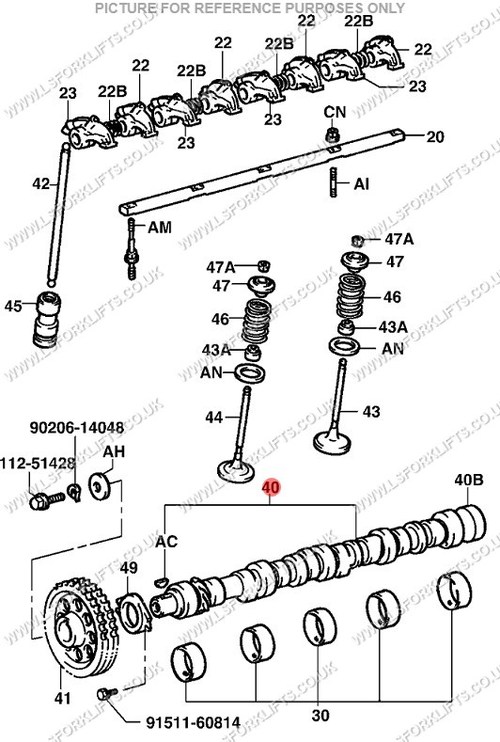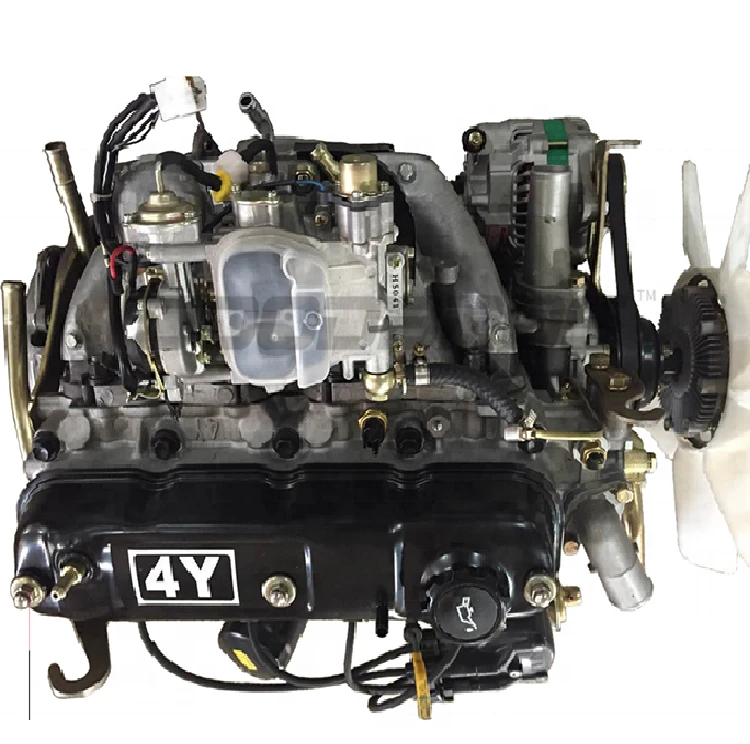How the 4Y Engine Compares to Other Engines in Terms of Fuel Efficiency
How the 4Y Engine Compares to Other Engines in Terms of Fuel Efficiency
Blog Article
Why the Engine Is the Ideal Selection for Performance and Performance in Your Cars And Truck
The engine stays a pivotal element in auto design, mostly due to its considerable impact on both performance and efficiency. As innovations in technology make it possible for smaller sized engines to deliver exceptional power while optimizing fuel economic climate, the assimilation of attributes such as turbocharging and crossbreed systems ends up being significantly vital. These advancements not just enhance driving experience but likewise address environmental problems. However, the question develops: just how do these components integrate to redefine our understanding of automotive performance? Discovering this equilibrium discloses much deeper understandings into the future of engine style.
Comprehending Engine Types
Comprehending the various kinds of engines is crucial for optimizing performance and efficiency in automotive layout. The key engine types include internal burning engines (ICE), electrical engines, and hybrid systems, each offering distinct advantages and constraints.
Internal burning engines, which can be further categorized into fuel and diesel variations, count on the burning of gas to create power. Gas engines usually provide higher RPMs and far better velocity, while diesel motor are known for their torque and fuel effectiveness, making them suitable for durable applications.
Electric engines, on the various other hand, use electrical motors powered by batteries or fuel cells. They provide rapid torque shipment, causing smooth acceleration and lower discharges. The effectiveness of electrical engines is dramatically greater than that of ICEs, making them a popular choice for eco-conscious customers.
Hybrid systems incorporate both internal combustion and electric engines, leveraging the staminas of both technologies. They maximize fuel usage by using electrical power at lower speeds and switching to fuel or diesel for higher speeds or larger loads.
Picking the right engine kind is essential for achieving preferred performance metrics and environmental sustainability in modern-day automotive engineering.
The Influence of Engine Size
Engine dimension frequently plays a critical function in figuring out a car's efficiency and performance. Usually gauged in litres or cubic centimeters, engine dimension directly influences the power output and torque characteristics of a car.
Nevertheless, boosted engine size typically associates with reduced gas performance. Bigger engines eat even more fuel, resulting in higher emissions and operational costs. Producers should balance the need for power with the demand for fuel economic situation. Smaller sized engines can deliver adequate efficiency for daily driving while advertising much better performance, making them a preferred option in mid-size and compact lorries.
In addition, developments in engine design, such as turbocharging and straight fuel shot, enable smaller engines to accomplish power levels similar to their larger equivalents. This pattern emphasizes the importance of not exclusively concentrating on engine dimension but likewise considering general automobile design and technology (4y engine). Eventually, the impact of engine size on efficiency and efficiency emphasizes the need for consumers to analyze their particular driving preferences and requirements when picking a vehicle
Advanced Engine Technologies
Developments in engine innovations have actually significantly reshaped the landscape of vehicle efficiency and performance, building upon the foundational concepts established by engine size. Significantly, innovations such as turbocharging and straight fuel injection have allowed smaller sized engines to supply power degrees formerly related to bigger equivalents. Turbochargers press air getting in the engine, enabling enhanced power outcome without a matching boost in engine size, while direct injection enhances fuel delivery, enhancing combustion effectiveness.
Furthermore, variable valve timing systems have emerged as an important innovation, enabling engines to change valve operation based upon driving conditions. This adaptability improves both efficiency throughout velocity and fuel efficiency throughout travelling. Crossbreed and electric engine modern technologies further highlight the change in vehicle style, combining traditional inner burning engines with electric motors to make best use of effectiveness while reducing emissions.
In addition, improvements in materials scientific research have actually resulted in lighter, more sturdy engine elements, even more boosting performance and durability. The assimilation click over here of sophisticated electronics and engine control devices additionally allows for real-time changes, guaranteeing optimum performance throughout various conditions. Collectively, these sophisticated engine technologies not only improve lorry performance but likewise contribute to an extra lasting vehicle future, showing the continuous evolution of engine layout.
Harmonizing Power and Performance
Striking a balance between power and effectiveness is crucial in modern-day vehicle layout as producers seek to satisfy significantly rigid exhausts policies while pleasing customer demand for efficiency (4y engine). The challenge hinges on enhancing engine features to deliver robust power result without sacrificing fuel economic situation
To achieve this balance, engineers use various approaches, such as turbocharging, which enhances engine power forcibly in even more air, permitting for a smaller engine displacement that enhances gas performance. Variable shutoff timing technologies likewise play a substantial function, making it possible for engines to change their performance features based upon driving problems, thereby enhancing both power and effectiveness.
Additionally, advancements in materials and manufacturing techniques have resulted in lighter engine elements, which minimize general automobile weight and boost gas performance without endangering power. Crossbreed modern technologies have actually additionally become a sensible remedy, incorporating typical inner burning engines with electrical powertrains to give an increase in efficiency while preserving lower discharges.

Future Fads in Engine Layout

Moreover, the advancement of advanced materials, such as light-weight composites and high-strength alloys, is established to reinvent engine components. These materials not just decrease weight yet additionally enhance thermal performance, thus maximizing performance. Furthermore, suppliers are exploring variable compression proportions, permitting engines to adapt to different driving problems, boosting both power outcome and gas economy.
Even more, the increase of artificial intelligence and artificial intelligence in engine design is allowing anticipating upkeep and real-time efficiency optimization. This modern technology can cause engines that self-adjust why not try this out for optimal efficiency based on driving patterns.

Final Thought
To conclude, the engine offers as a crucial component in accomplishing ideal performance and effectiveness in contemporary vehicles. Advanced innovations, such as turbocharging and hybrid systems, improve power outcome while lessening fuel usage and discharges. The interplay between engine size and design look here remains to evolve, driving innovations that balance exhilarating performance with environmental sustainability. As automotive design proceeds, the concentrate on establishing effective, powerful engines will remain extremely important in forming the future of transport.
Furthermore, advancements in engine style, such as turbocharging and direct gas injection, allow smaller sized engines to accomplish power levels equivalent to their larger equivalents.Advancements in engine technologies have actually substantially reshaped the landscape of auto performance and performance, building upon the fundamental principles established by engine dimension. Turbochargers compress air getting in the engine, enabling for raised power outcome without a corresponding boost in engine size, while straight injection enhances gas distribution, boosting burning efficiency.
Hybrid and electrical engine innovations better show the change in automobile style, combining standard inner combustion engines with electrical motors to take full advantage of performance while minimizing emissions.
Jointly, these advanced engine innovations not just boost car efficiency yet also contribute to an extra lasting automobile future, showing the recurring evolution of engine design. (4y engine)
Report this page